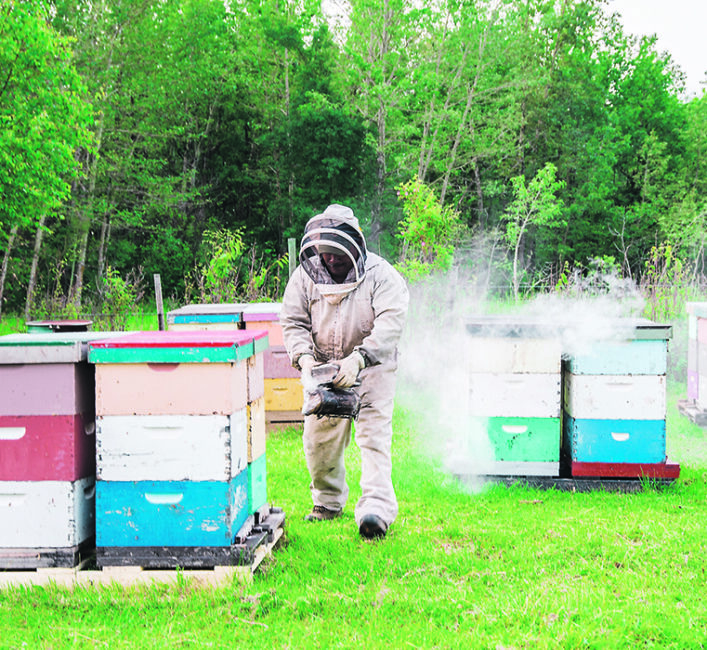Drought expected to affect honey production

Bees were forced to find other sources of food this summer, such as weeds, which could change honey’s colour and taste
Heat waves and drought that decimated crops such as canola this summer likely caused honey production to decline by as much as 30 percent in Alberta, says an industry leader.
The harsh conditions even affected the appearance of the honey, said Connie Phillips, executive director of the Alberta Beekeepers Commission. Bees were forced to forage on wildflowers and weeds such as goldenrod that are generally more resistant to extreme weather, she said.
The insects were living on the nectar and pollen of “anything that would be growing out in the ditches, along roadsides, next to farmers’ fields — those types of plants … all honey, just depending on where it comes from, has unique flavours, but I haven’t had an opportunity to taste any of this new season yet.”
More than 40 percent of Canada’s honey industry is based in Alberta, which produces about 18.6 million kilograms in a good year. The crop in 2018 was valued by Statistics Canada at about $64 million in terms of gross economic benefits, not including a further $3 million in sales of beeswax and pollen.
Although production in central Alberta in general terms was slightly lower than average this year, conditions were much drier in regions such as the northern part of the province, said Phillips.
“We were starting to hear more around the middle part of July that there were going to be issues with forage.”
The industry’s problems were further aggravated by the wildfire smoke that covered much of Alberta. Smoke is used by beekeepers to pacify the insects, making them less active.
As a result, honey production likely fell by 20 to 30 percent in 2021, making it the third consecutive season of lower than average totals in Alberta. Phillips said the lack of supply has caused prices to rise to $2.75 to $3 per pound, “which is more than double what it was two years ago.”
The situation could further open the door to competition from foreign honey among consumers looking to minimize their grocery bills, she said.
Phillips estimated about 75 percent of Alberta’s honey is usually created by bees foraging on canola, “and that’s generally really white and very clear … it’s a very high quality, pure honey, and so it’s on par with equally high-quality honey from anywhere around in the world.”
However, she said unusually high temperatures and drought this summer caused canola plants to quit producing nectar and pollen in much of the province.
“And then (the bees) also would be foraging on alfalfa, and this year, there was no second cut for alfalfa just because of the heat.”
The hot weather even affected canola in regions such as southern Alberta where such crops are irrigated, she added.
Environment Canada said a heat dome set new maximum daily temperature records in the mid- to high 30s C in 45 communities across Alberta on June 30, surpassing 40 C in a further four.
Although it is difficult to say if the different appearance, and potentially taste, of much of this year’s honey will have any impact on sales, Phillips said “I generally think it won’t be an issue.”
For more content related to drought management visit The Dry Times, where you can find a collection of stories from our family of publications as well as links to external resources to support your decisions through these difficult times.
Source: producer.com


